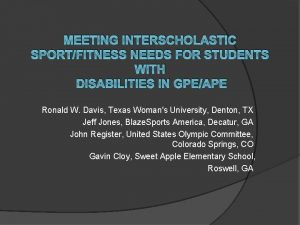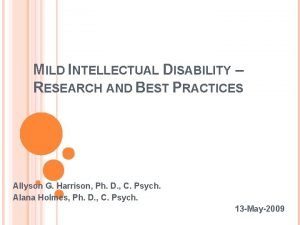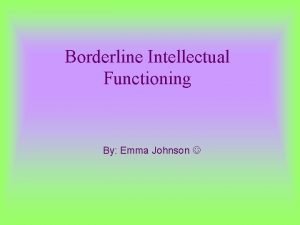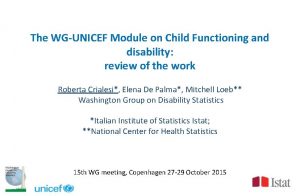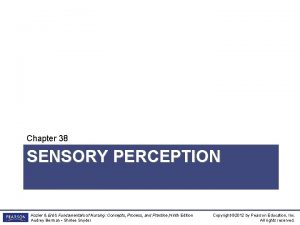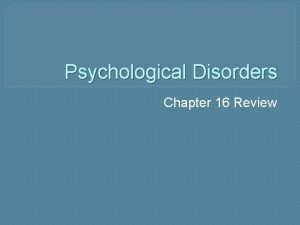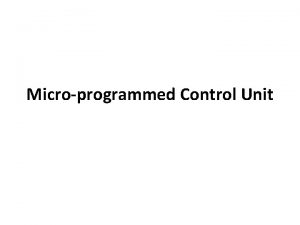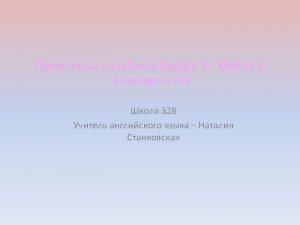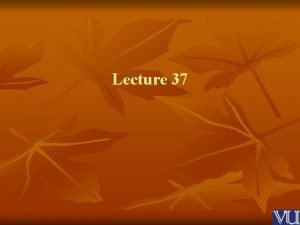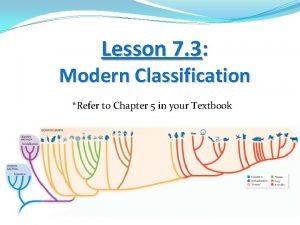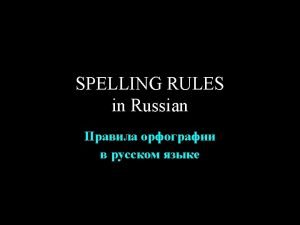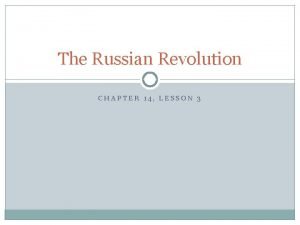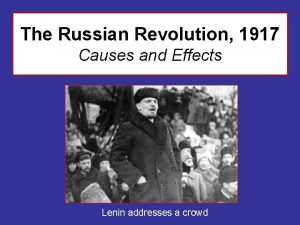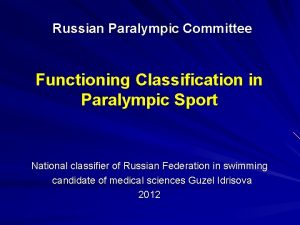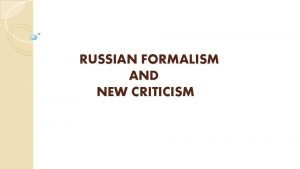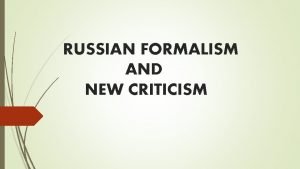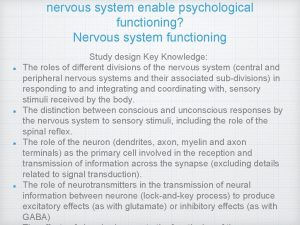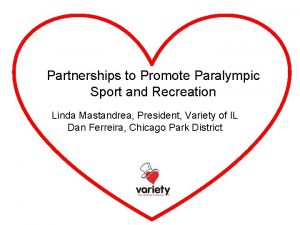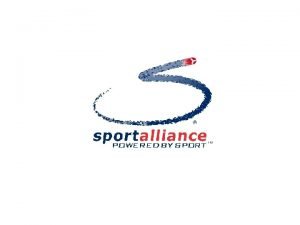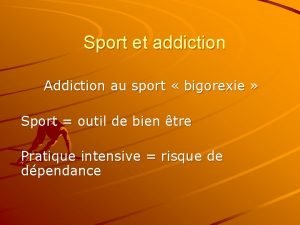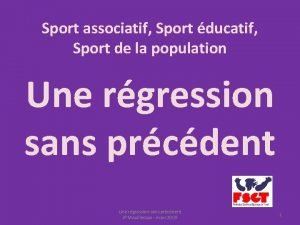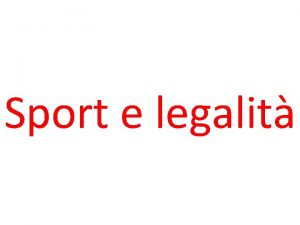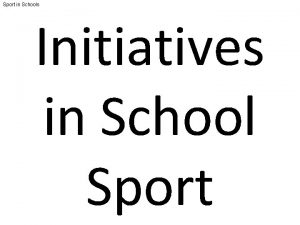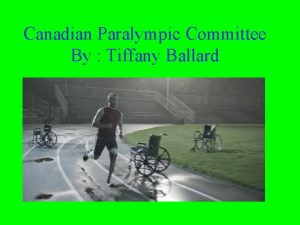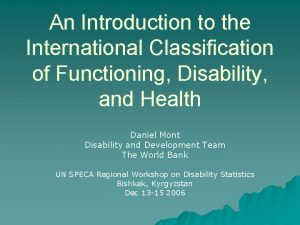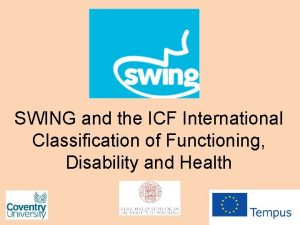Russian Paralympic Committee Functioning Classification in Paralympic Sport

























- Slides: 25

Russian Paralympic Committee Functioning Classification in Paralympic Sport National classifier of Russian Federation in swimming candidate of medical sciences Guzel Idrisova 2012

Paralympic sport Summer sports Wheelchair basketball Boccia Cycling Sitting volleyball Goalball Rowing Canoe Judo Equestrian Para athletics Para sailing Powerlifting Para swimming Wheelchair rugby Para archery Para shooting Wheelchair tennis Table tennis Triathlon Wheelchair fencing Football 5 -a-side Football 7 -a-side Winter sports Para biathlon Para alpine skiing Wheelchair curling Para cross-country skiing Para ice hockey

Classification is a process of forming athletes into groups based on their functional impairment


CLASSIFICATION’S GOALS maintaining fair competing conditions for athletes with impairment guarantee that impairment would not stop an athlete from participating in sport competitions

Classification principles Equity- maximization of equal opportunities in one category by distributing athletes into categories based on their functional conditions Involvement- inclusiveness of athletes of different genders, impairments and levels of their seriousness Status Analysis - examination of athletes whose impairments have tendencies of healing

Functions Determination whether an athlete is eligible to compete at the competitions Grouping athletes into categories in order to maintain fair environment

? ? ? Athletics higher category Swiming lower category

International Paralympic Committee (IPC) CLASSIFICATION CODE Classification Code of IPC was established in November 2007, and is governing classification process in all sports for all levels.

Functional categorization of physically impaired athletes is based on their moving abilities and is graded in points

Physical impairment, included in System of Functional Classification(SFC) and allowing to compete in the events Spinal cord injuries Cerebral paralysis (CP) , Brain injuries Limb deficiency Short stature, arthrogryposis Other physical impairments

Minimal level of impairment

Impairments, not included in the system of functioning classification Disability or absence of internal organ General chronic illness Joint deterioration Osteochondrosis Obesity Mental illnesses Skin illnesses Haemophilia Epilepsy

Impairments, not included in the system of functioning classification (2) Visual impairment Hearing impairment Intellectual impairment

IBSF (International Blind Sports Federation), recognize three categories– full blindness, partial blindness, visual impairment CISS (International Committee of Sports for Deaf), recognizes two categories– completely deaf and hearing impairment INAS-FID (International Federation for athletes with Intellectual Impairment), recognizes one category SOI (International Special Olympics Organization), recognizes one category

Classification procedures Medical testing Technical testing Examination during the competitions

Classifiers group Medical classifier (doctor) Technical classifier(coach) Medical classifier Technical classifier Classification rules

Medical testing Coordination tests Muscular conditions tests Joint mobility tests Measurement of impaired limbs Height measurement and determination of body proportion deficiencies

Technical testing is a measurement of athlete’s ability to perform specific goals in his sport outside of the competitions

Healthy athlete’s abilities- 300 points Participation requirements- 285 points or less after medical testing results

In para swimming for physically impaired athletes exist 10 categories (S 1 -S 10). Lower the category number is, harder the impairment level , for instance, category S 1 stands for maximum restriction of physical activity, and category S 10 – for minimal restrictions

Nowadays, higher category athletes have the biggest representation Development of para sports since 2007 shows: - appearance of more middle and smaller categories - more athletes under 20 years old compete as para athletes

Why to learn about classification Necessity in having more professional approach when grouping athletes into categories Necessity in grouping learning organizations with the perspective of improving recovery, health recreation and training processes.

Classification’s aim to prove that sport achievements do not depend on physical qualities of an athlete, but rather on his training effort, level of his sport knowledge, talent and competing experience.

Thank you for your attention!
 Paralympics vs special olympics
Paralympics vs special olympics What are the olympic and paralympic values
What are the olympic and paralympic values Child functioning module
Child functioning module Borderline intellectual functioning
Borderline intellectual functioning Adaptive functioning
Adaptive functioning Borderline intellectual functioning
Borderline intellectual functioning Adaptive functioning
Adaptive functioning Autism idea
Autism idea Child functioning module
Child functioning module Sensory functioning fundamentals of nursing
Sensory functioning fundamentals of nursing Process of striving toward ideal functioning
Process of striving toward ideal functioning Functioning of micro programmed control unit
Functioning of micro programmed control unit Stop suddenly phrasal verb
Stop suddenly phrasal verb Principle of bod incubator
Principle of bod incubator Advantages of group therapy
Advantages of group therapy Six domains of the family functioning assessment
Six domains of the family functioning assessment What is stimming
What is stimming Five principles of psychological functioning
Five principles of psychological functioning Well functioning financial markets
Well functioning financial markets Lazy learners vs eager learner
Lazy learners vs eager learner Manifold classification in statistics example
Manifold classification in statistics example Traditional classification vs modern classification
Traditional classification vs modern classification Chapter 27 world war 1 and the russian revolution
Chapter 27 world war 1 and the russian revolution Russian minimal pairs
Russian minimal pairs Lesson 3 the russian revolution answer key
Lesson 3 the russian revolution answer key Causes and effects of the russian revolution
Causes and effects of the russian revolution
